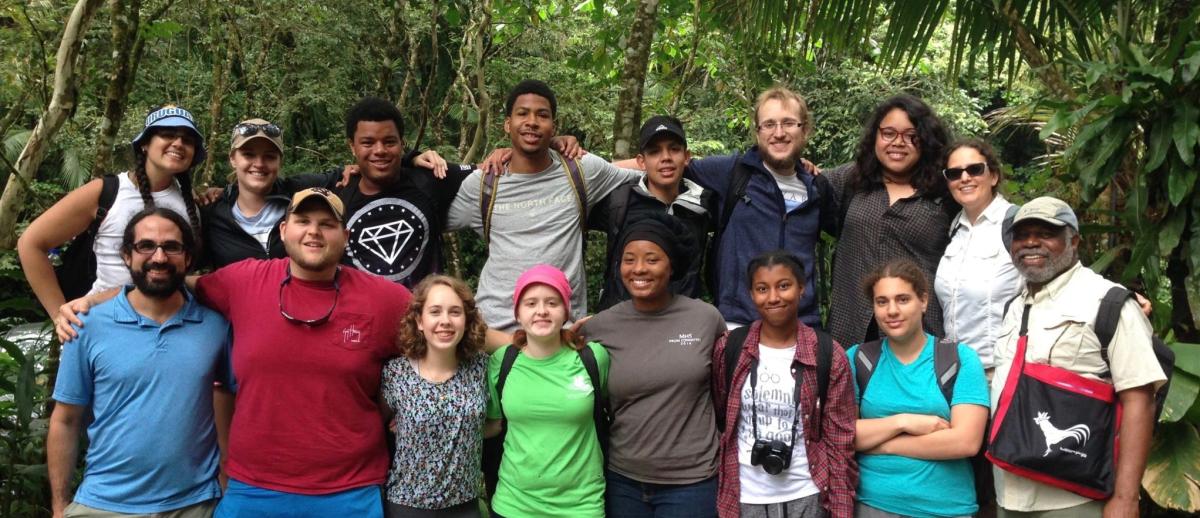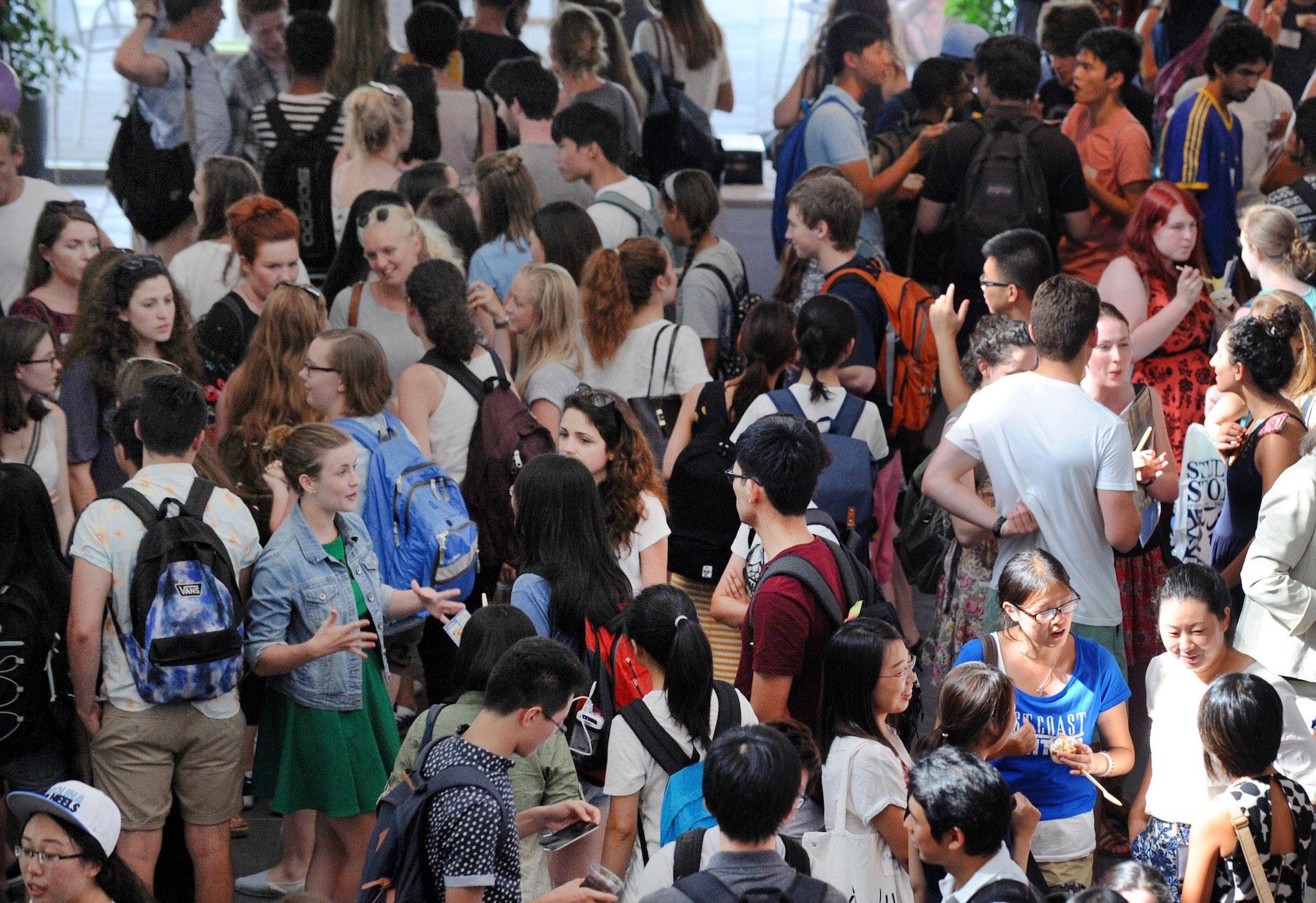To Diversify, Global Education Needs a Fundamental Shift in Mindset and Practice
archive


participants in University of North Carolina 'Global Take Off' program visit Puerto Rico. (Source: CGI)
To Diversify, Global Education Needs a Fundamental Shift in Mindset and Practice
As global education expands at colleges and universities in America and around the world, one must ask whether all of our students have access to these opportunities? Or are we widening the divide between haves and have-nots on our campuses, with students from privileged backgrounds taking full advantage of such opportunities, while other students remain at the margins? This concern lies at the intersection of two great priorities in American higher education today: global engagement and equity. My school, the University of North Carolina at Chapel Hill (UNC), is typical in stressing both, making “global education” and “equity and inclusion” two of the six priorities in its current Academic Plan. In fact, UNC is launching a Global Guarantee that by 2025 all students regardless of their academic discipline, age, disabilities, education or family background, gender identity, racial or ethnic identity, sexual orientation or socio-economic status can have a transformative global experience while at Carolina.
I applaud this ambitious goal. More than that, my center is expected to take the lead on this Global Guarantee because we have already been working for close to a decade on opening access to global opportunities for traditionally underserved students. With this experience and perspective, I am pleased that senior administrators understand that the Guarantee will require a significant amount of funding and therefore have made it a top fundraising priority.
Nevertheless, at every opportunity I stress that increased funding alone is insufficient. Scaling up current efforts requires a fundamental shift in mindset and practice, and this is a challenge facing universities all over the world that are trying to diversify global education. In this essay, I’d like to share some challenges and lessons learned at my institution as it strives to provide global opportunities to students of all backgrounds, disciplines and perspectives, as a way in to a global-e series on diversifying global education.
Expanding Access and Opportunities
One needed mindset shift is to make clear to faculty, staff, and to the students themselves that all students can pursue global opportunities. This requires that we challenge our assumptions about what type of student should pursue global opportunities or who is ready for them. Yes, students who have never been abroad should apply for and can receive a Fulbright! But to achieve this, we need to share student stories widely and to challenge traditional assumptions and narratives. That means meeting students where they are and not where we think they should be.
This shift in perspective also requires that we fully acknowledge and listen to the diverse needs, interests, and concerns of students. Doing so can prevent us from misunderstanding what types of opportunities or resources students need, or what barriers—financial, cultural, and institutional—they face.
To address the increasingly diverse needs, interests, and concerns of an expanding pool of students, we must also define “global experiences” more broadly and offer a wider variety of options. This requires us to embrace two important principles:
1) All global experiences, whether for-credit or non-credit opportunities, are valuable. Robust global learning can take place, for example, in the classroom by taking a course on global public health or outside the classroom by interning with the U.S. State Department.
2) Global experiences can take place abroad, on campus, or in the community. Studying abroad in Argentina, taking advanced foreign languages on campus, or working with refugee population locally can all bring unique and complementary perspectives to a global education.
Shifting our mindset is necessary but not sufficient. We must also shift our practices, especially how we communicate. Traditional marketing and recruitment processes result in traditional applicants. To reach further, let’s seek students and campus partners who are well-connected to networks that interact with all students, especially networks that may not be viewed as being global. There are many possible ways to do this, for example, co-organizing information sessions with identity-based student organizations, hosting gatherings for first-time travelers to share their experiences directly with their peers who have yet to travel, and promoting opportunities through offices like housing, financial aid, and admission.
...increased funding alone is insufficient. Scaling up current efforts requires a fundamental shift in mindset and practice, and this is a challenge facing universities all over the world that are trying to diversify global education.
Another new practice is to adjust application processes. For example, transitioning to rolling deadlines for programs and awards can better meet the timing constraints of students, especially transfer students. Also, we should consider abandoning a GPA (or equivalent) requirement for global opportunities. Too many students struggle to transition from high school to university coursework, but then adjust and ultimately excel yet their GPA may remain modest. Why deny them a global opportunity?
Another practice for increasing accessibility is to expand co-curricular experiences, which can take place abroad, on campus, or in the local community. When planned and executed rigorously, such experiences complement for-credit opportunities, whether Study Abroad or coursework taken on campus.
Examples from UNC
Two co-curricular programs at UNC are Passport to Go!, which provides financial and logistical support for students to obtain their first US passport and connects them programmatically with peers, faculty, and staff to explore global opportunities, and Global Take Off, which offers fully funded, five-day experiences in Puerto Rico for first year and new transfer students. The goal of both these early interventions is to reach a wide variety of students, especially those who are traditionally underserved by global education, and to empower them to subsequently pursue other longer experiences.
The data from these two programs are encouraging. Since its launch in 2012, Passport to Go! helped 499 students receive passports and participate in the program; we have been fortunate to have sufficient funding to allow all eligible applicants to participate. Of the 499 participants:
- 267 are students of color (54%)
- 100 are transfer students (20%)
- 299 are first generation college students (60%)
- 260 have no one in their immediate family who has traveled internationally (53%)
This program also aims for disciplinary diversity, and it has attracted students from 71 different academic disciplines, including Dramatic Art, Public Policy, Computer Science, and Biomedical Engineering.
Global Take Off: Puerto Rico, launched in 2016, has had five cohorts totaling 59 students. The program is highly competitive and has attracted 728 applicants. The following table shows the demographics of the cohort who participated and who applied.
Table 1: Participants and Applicants - Global Take Off: Puerto Rico
| Participants (59) | Applicants (728) |
| 53 (90%) had no travel experience | 434 (60%) had no travel experience |
| 46 (78%) have a total family income of less than $40,000 | 433 (59%) have a total family income of less than $40,000 |
| 44 (75%) have no one in their immediate family with international travel experience | 330 (45%) have no one in their immediate family with international travel experience |
| 19 (32%) are transfer students | 216 (30%) are transfer students |
| 42 (71%) are students of color | 492 (68%) are students of color |
| 39 (66%) first-generation college students | 427 (59%) are first-generation |
Crucially, both these relatively inexpensive programs allow first year students to begin exploring global opportunities even before they set foot on campus. Once they have participated in one of them, the students become agents of their own global journey, feeling empowered to pursue ever deeper and longer experiences. It is incumbent upon the university to offer such students numerous mentoring and programming opportunities that stress preparation and reflection. As graduation approaches, students must also receive counseling about career options and post-graduation opportunities.
Creating such a pipeline furthermore requires a shift in mindset and practice, and if done well it can lead to significant successes. For example, Jalyn—who came to UNC with limited global experience and high financial need—got a passport, studied abroad several times, became proficient in Arabic, and after graduation joined the Peace Corps in Morocco.
Challenges
Expanding such co-curricular global experiences has its own challenges. First, their value must be demonstrated to students, families, and the institution actors, all of whom may be skeptical about how such experiences connect to students’ academic and career interests and whether they are ethically and sustainably grounded in the community.
Demonstrating the value of co-curricular experiences requires measuring and evaluating them, which leads to a second challenge. Tracking them is difficult for both logistical reasons (how does a university know a student has had one?) and methodological ones (what exactly should count as a “global experience”?). By not tracking these experiences accurately, we underreport the global work of our students.

One attempt UNC made to track co-curricular global experiences was a survey sent to all 18,000 undergraduates in March 2018. We learned that 39% of respondents had participated in a co-curricular experience, and 91% of them found their experience “valuable” or “very valuable.” The response rate, however, was modest (7%), reflecting perhaps the inadequacy of our current tracking apparatus.
Importantly, there is a legitimate critique that universities run the risk of seeming to shunt traditionally under-served students into short-term opportunities while preserving long-term opportunities for privileged students. That indeed is a significant problem and to counter it, we need to find ways to ensure that all global experiences, whatever their duration, are accessible, rigorous, and rewarding.
In the coming decades, higher education worldwide faces the challenge of expanding the diversity of student populations that benefit from global education. Of course, scaling up current efforts requires more funding, but even more importantly it requires a fundamental shift in mindset and practice. Such a shift will help us reach all students, allowing our globally-oriented student body to mirror our student body as a whole. Such inclusion would be good for higher education, for our countries, and for the world.



